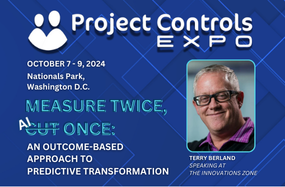Primavera Contract Management and the Holy Grail of ‘On Time, On Budget’
The bigger a project gets, the more things can go wrong. Healthcare.gov for Americans to buy health coverage online was a high-profile (over $400 million) project that derailed. Under political and contractual pressure to achieve the Holy Grail of ‘on time and on budget’, the website was launched on October 1, 2013. However, technical difficulties left many would-be customers in the lurch. On July 30, 2014, the Government Accountability Office cited a lack of effective planning and oversight practices. These problems were also compounded by the sheer number of different contractors involved. To avoid such debacles and achieve success in complex projects takes both sound project management and solid contract management.
OK, King Arthur – How Do We Do It?
As Arthur, Lancelot and the other Knights of the Round Table never actually laid hands on the Holy Grail, they might not have been the best people to ask. Since then however, project management experts have come up with a few strategies for success. A basic blueprint is:
- Map out the different project phases and their impacts on schedule and budget
- Make a realistic project plan that includes any appropriate contingency plans
- Update the plan regularly (for example, with earned value management statistics)
- Track project participant contributions beforehand (reasonable, but firm time and pricing commitments) and during (interim milestones).
Converting the plan into results takes the right organization and tools. Project management applications can help plan and project portfolio management software can help optimize between projects. It takes a little more to manage associated costs and contracts as well.
Contract Management
The Primavera project management suite from Oracle covers all of these aspects. While P6 Professional gives a project team high-performance stand-alone project scheduling capability, and P6 EPPM brings enterprise project portfolio management, Primavera Contract Management (PCM) provides the additional control for complex projects with diverse players. Construction projects are a case in point. With project and contract managers trying to harmonize interactions with owners, architects, engineers, suppliers and subcontractors, there’s usually no shortage of issues, changes and documents to manage too.
Control and Change Management
PCM gives users direct views and insights into contracts with contractors and subcontractors, as well as their performance against those contracts. Potential issues are flagged to help project teams react before the problem instead of after it. Scheduled payment requisitions can be prepared and negotiated too, to streamline the contract fulfilment process. Change management (inevitable) is built in to track modifications, impacts, accountability and any guilty parties who are holding up any deliverables.
Birdseye Views and Reporting
Dashboards are also a major part of Primavera Contract Management. Organized by role and by key performance indicator, they let users see who’s done what and when. Customizable reports give visibility into budgets and schedules, with variances to help track earned value management. The content repository provides a secure, central location for storing contract and related documentation, including their different versions.
And the Holy Grail?
‘On time and on budget’ isn’t really the Holy Grail, which by definition remains unobtainable. But completing projects on schedule without extra cost is in fact very achievable, when you have the right approach and good quality tools. Different projects have differing degrees of complexity. The Primavera suite, including Primavera Contract Management in particular, lets you properly manage them all.








